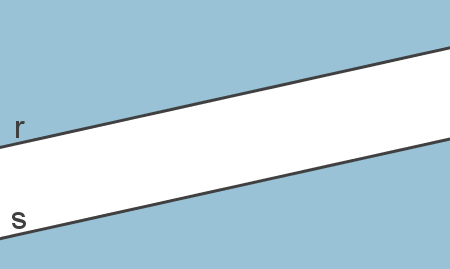What were the Norman invasions?
The Norman invasions were expeditions organized by vikings in the region where the Kingdom of the Franks, from the ninth century. The Viking invaders had as their main objective to easily obtain large sums of wealth. These Norman incursions into the Frankish-populated region lost momentum in the transition from the ninth to the tenth century.
The Norman invasions led to the establishment of Norsemen in a certain region of Normandy (northern France) from 911 onwards. This region occupied by the Normans was ceded to Rollo by the king of the West Franks, Carlos III.
Who were the Normans?
The Normans were originally from Scandinavia, a region in Northern Europe, that is, the Normans were Vikings. The Franks used the term "northernman” to refer to the Vikings, which would be the “men of the north”. Historians consider that the majority element that composed the Norman invasions was from danish vikings. This does not mean that the expeditions against the Franks were composed only of Danes, but that, in general, they were formed by these people.
During the period of Viking era, the Danish Vikings had as the main focus of their expeditions two regions of Europe: the north the region occupied by the Franks (now France) and the region occupied by the Saxons (now the England). The Norwegian Vikings directed their navigations to the territories of Scotland, Ireland and the Atlantic Islands, and the Swedish Vikings focused their expeditions on Eastern Europe.
For the Viking Age, historians consider the period from 793, with the Nordic attack on the monastery of Lindisfarne, in the north of England, until 1066, with the invasion and conquest of England by the Norman William the conquer.
How did they happen and what was the main objective of the Norman invasions?
The Norman invasions had as their main objective the obtaining great amount of wealth quickly and easily from the withdrawals. The free regions were seen as ideal for carrying out looting, as their towns and cities were, in general, poorly protected and, therefore, very easy to be looted. The main targets of the Normans were the abbeys and monasteries because of the large amount of gold and silver items they stored.
The expeditions organized by the Normans had the element surprise to plunder the Frankish villages. This strategy was important to surprise the Franks and prevent them from organizing their defenses or requesting reinforcements. The Normans, in general, carefully chose the days of carrying out the attacks, preferring, above all, Sundays and holidays and precisely at the time when religious services were held.
Do not stop now... There's more after the advertising ;)
The main means of transport used by the Normans was the ship. His attacks, in the beginning of the ninth century, were concentrated in the coastal regions of the Friesland (Netherlands and Belgium) and Normandy (France). However, as these regions became impoverished with successive looting, the Normans began to enter the rivers and attack inland regions.
With the exploration of rivers in the interior of the Kingdom of the Franks, the Normans began to attack the riverside regions and, as they knew, better the region, they began to use the horse and invest against regions farther away from the rivers, installing, for this, camps. These encampments allowed the Normans to increase their range of action, but also, as a consequence, increased the possibility of being ambushed.
franc resistance
The early years of the Norman invasions encountered virtually no organized resistance that could hinder the action of the Normans (and when they found it was a very small and fragile resistance). This action was greatly facilitated by the stance of the Frankish nobility of not mobilizing and sending their armies to expel the invaders, even when requested by the king.
Thus, the Franks were left with two choices: to run away of the Normans or bribe them. The population, especially the religious (main target of the Normans), fled to save their lives and save as much goods as they could carry. Bribery was practiced by the Frankish kings who, without the help of the nobles, saw in it a way of making the invaders go away.
This bribe was called Danegel (“Danish tribute”), and payment was generally made in gold. The invaders promised to leave if they received payment, but later on they almost always returned demanding more gold from the francs. Historians point out that, during the ninth century, the Franks gave about 39,000 pounds (18,000 kilograms, approximately) in gold for the Normans, and this amount most likely represents only a third of the total that was given away|1|.
Over time, the Franks managed to organize themselves and form resistances that made it difficult for the Normans to act. This achievement is mainly attributed to the action of the king Carlos the Calvo, which promoted the construction of protective walls and moats, in addition to works that increased the security of cities, such as watchtowers.
The resistances developed by the Franks were fundamental to guarantee the defense of the city of Paris in the siege promoted by the Normans in 885 and 886, for example. With the strengthening of the Frankish defenses, the Norman invasions were losing strength from the 10th century onwards.
|1| D’HAENENS, Albert. The Norman Invasions: A Catastrophe? São Paulo: Perspectiva, 1997, p. 45.
By Daniel Neves
Graduated in History


